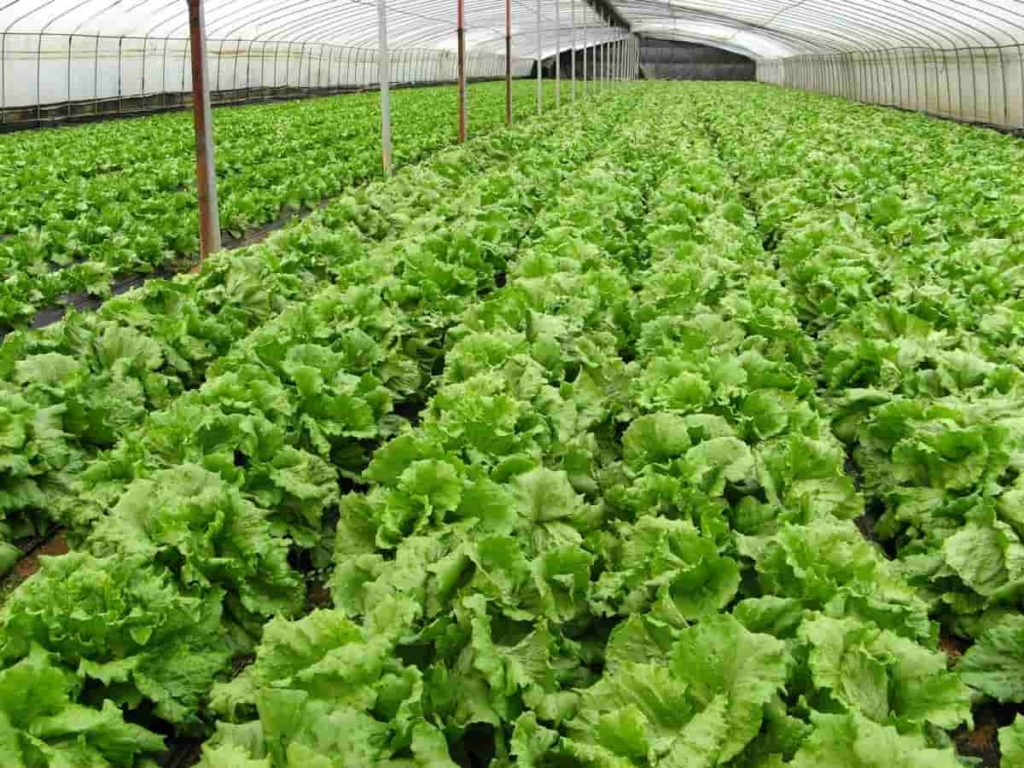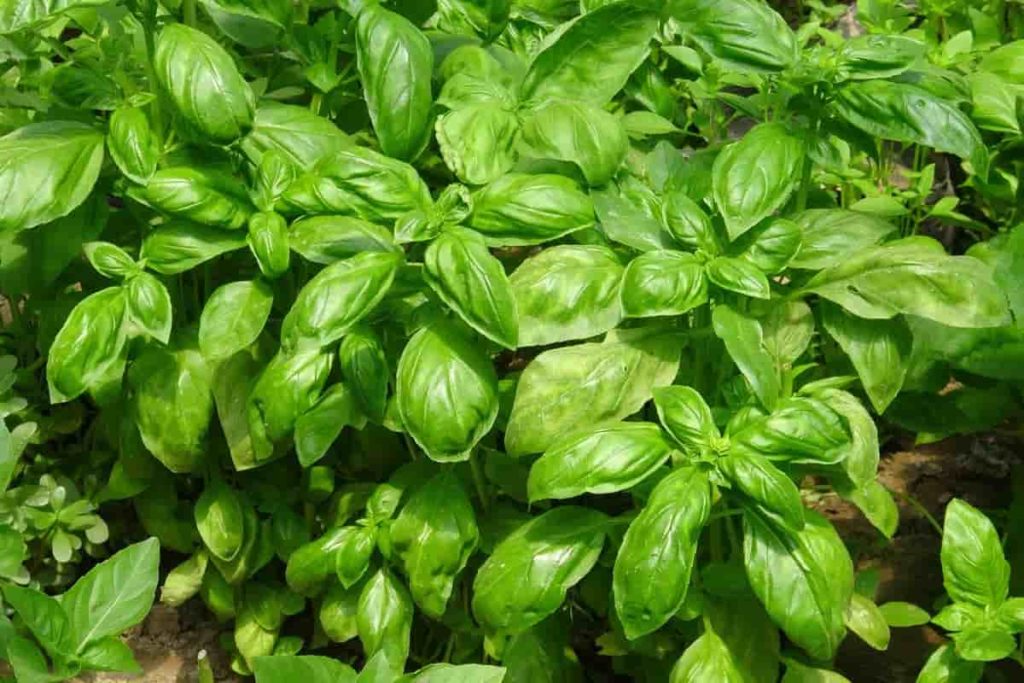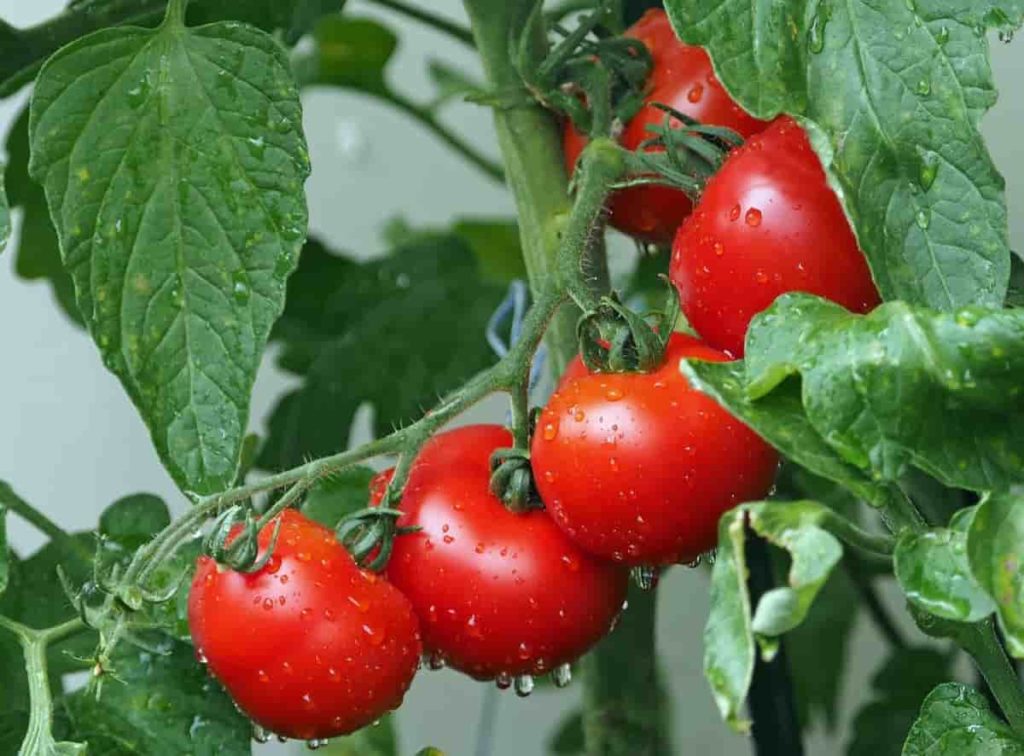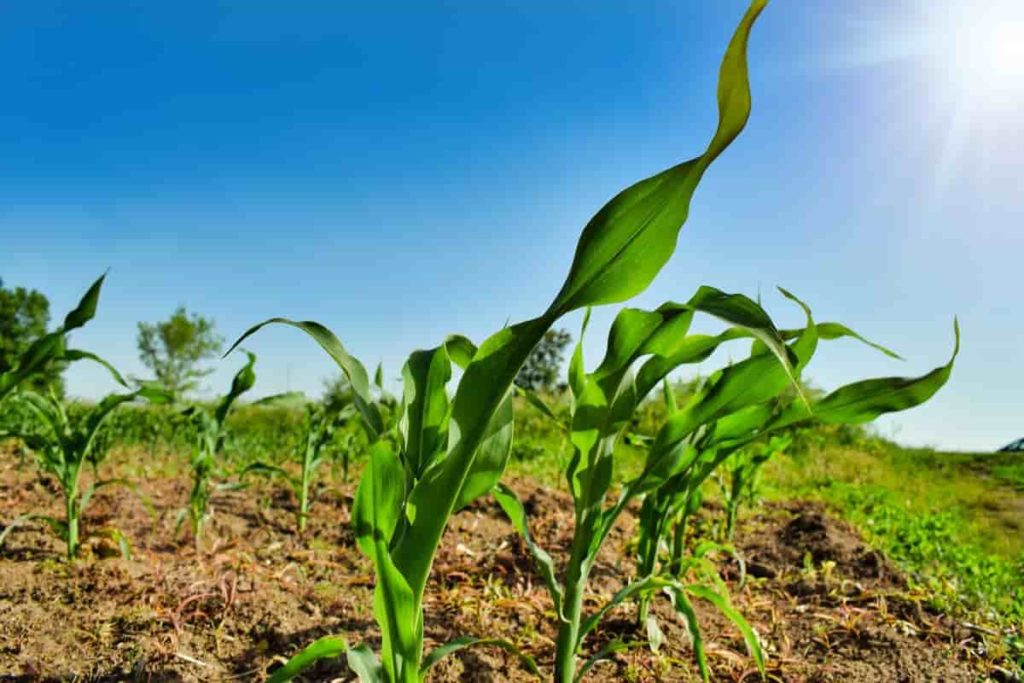Introduction to organic farming in Meghalaya: A system that relies on ecosystem management rather than external agricultural inputs is known as organic farming. It begins to consider the potential environmental and social effects by eliminating the use of synthetic inputs like artificial fertilizers and pesticides, genetically modified seeds and breeds, additives, preservatives, and irradiation. They are replaced by specific site management practices that prevent pests and diseases and maintain long-term soil fertility.
Farming in Meghalaya is traditionally organic and has been practiced by farmers and the farming community for ages. Estimating the comparative economics between organic vs. inorganic is essential for deciding rational policy for advancing the organic farming movement in the mountainous region of the state. In addition, careful analysis is needed to identify the barriers or factors that are affecting the acquisition of organic potential in the northeastern mountainous region and especially in Meghalaya.
Because of the above issues, the farmers in Meghalaya have followed some objectives. The first objective is to examine the socio-economic characteristics of organic farmers in Meghalaya, secondly, to review and compare the economics of (organic vs. inorganic) high-value commodities which have the potential to grow organically. Thirdly, identify the factors that are influencing farmers to practice organic farming and finally, look at the barriers to organic farming in the region.
In Meghalaya, organic farming promoted specific crops like Turmeric, Ginger, Pineapple, Khasi mandarin, and Cashew. The most important step is to establish market links (which is a condition for its success) with the farmers.
Organic Farming in Meghalaya, important factors needed, mission organic in Meghalaya, major challenges, organic certification

Soil management for organic farming in Meghalaya
The soil of Meghalaya is rich in organic carbon, a measure of the soil’s ability to supply nitrogen, deficient in available phosphorus, and below average in available potassium. Soil reactions vary from acid (pH 5.0 to 6.0) to hard acid (pH 4.5 to 5.0). Most soils at high altitudes under the high rainfall belt are highly acidic due to intense leaching. The basic saturation of these soils is less than 35%. This soil is not suitable for high crop production. Soil health is the foundation of an organic farming system. Fertile soil provides essential nutrients to plants while supporting a diverse and active biological community that helps soil resist environmental degradation. The current guidelines for organic farmers on nutrition management are quite general.
Organic farmers rely on insights and observations, vendors’ advice, traditional soil tests, and their own experience to decide on the quantity and type of soil modification. Organic farmers seek to “build soil” or increase its hereditary fertility by covering crop rotation, livestock, and green manure and crops. Crop rotation and cultivation methods should be controlled with proper seeds and pests while minimizing erosion. Organic amendments can be an important tool. Soil fertility and physical condition can be effectively maintained with proper use of circulation and organic modification. Applications should be based on soil testing and/or budget usage.
In organic farming, managing soil fertility requires a different approach than the one used in conventional farming systems. The nutrients in synthetic fertilizers are highly soluble, so the availability of nutrients are readily available to plants. Though, biological processes are not required to make them available and do not enhance the biological health of the soil. Many synthetic fertilizers destroy the soil by drying it out or making it acidic or saline. The methods and inputs used by organic producers (as well as many others in sustainable agriculture) promote biologically healthy soil that maintains fertility in different ways than traditional systems. They promote the decomposition of plant and animal remains so that they provide nutrients to plants.
Important factors needed for organic farming
Organic farming is essential to prevent depletion of the natural resource scarcity, thus leading to sustainable farming in the long run. This is done through careful management of the farming process, from fair use of water to methods that allow the soil to regenerate nutrients, eliminating the use of most chemical pesticides and chemical fertilizers. Which are typical features of conventional agriculture.
Organic farming practices seek to address concerns about environmental pollution, human health (both farmer and consumer), and the balance between environmental and agricultural sustainability. Because farming in Meghalaya is traditionally ‘organic’, it provides ample opportunity for expanding organic markets and for Meghalaya farmers to take advantage of these new and growing market opportunities. The production of crops in the organic farming system is gradually gaining momentum all over the world.
In organic farming, crop production is not only a holistic approach to the production system that provides standard “organic food”. It is a relatively free production system. Compared to conventional agriculture, which relies mostly on synthetic inputs, i.e., fertilizers, fungicides, pesticides, herbicides, growth regulators, etc. To reach the balance of soil and plants. Once the management system is in place, crop yields increase again.
In case if you miss this: Who Can Buy Agricultural Land In Germany & How To?

The need to sustainably improve and enhance the natural resource base through optimal management, soil nutrient renewal, and rational water management; Developed in the concept of modern organic farming to reduce the use of chemical pesticides, chemical fertilizers, and harmful methods that have evolved in conventional agriculture. Such approaches will likely address most of the concerns about environmental pollution, human health as well as ecological balance, and agricultural sustainability.
The goal of organic farming is to maintain and increase productivity by improving soil health and improving the agro-ecosystem. However, for the success of organic crop production, important factors need to be considered: –
- Maintaining living soil means good soil health.
- Provide all the essential nutrients of plants in the required quantity.
- Achieving sustainable high yield.
- Organic mulching for protection.
Crops cultivated under organic farming in Meghalaya
The major crops grown under organic farming are Lettuce, Turnip, Beetroot, Mustard Leaves, Capsicum, Coriander, Garlic, Cauliflower, Cauliflower, Peas, and Peppers.
Organic product pricing policy, as well as support for profitable pricing and promotion of contract farming, is essential through either public or public-private partnerships. As far as the potential of organic farming is concerned, Meghalaya is one of the most promising states in the NEH region. However, the state consists of common mountainous geographical regions, which is the biggest obstacle in the transportation of produce.
Some of the highly valued commodities in Meghalaya are Turmeric, Ginger, Orange (Khasi Mandarine), Pineapple, Cashew, Arecanut, etc., are widely grown. Supporting the opportunities for organic farming in the mountainous region of Meghalaya, most of these crops are grown without any external artificial inputs. To turn organic potential into reality, systematic studies are needed on the financial viability of growing these crops.
Why is organic farming important?
Because organic food is more delicious and healthier. And organic farming is natural and sustainable. Organic standards require operators to maintain and improve the quality of natural resources. Exercises to achieve this goal should be part of the management plan. Every certified organic producer is required to develop a production or handling system plan, also called an Organic Systems Plan (OSP).
OSP serves several purposes for an organic farm. OSP is a futuristic management tool that looks at future situations and circumstances. In this way, it helps farmers to make rational decisions instead of anticipating challenges and responding to crises. OSP is a description of human and natural resources as the productivity of a farm. It can help a farm fully develop its capabilities and use available resources more efficiently and effectively. OSP is an economic tool.
A well-built OSP can help operator budgets for expenses and revenue for the coming season and sustainably meet its ability to be both economically and environmentally viable. The OSP acts as a legally binding agreement between the certifier and the certified operation. The farmer receives a written guarantee from the certifier that the methods and materials are acceptable once the certifier approves the OSP. Failure to follow OSP may result in denial or loss of certification.
The recommendations will need to fit within the OSP so as not to jeopardize the organic certification. Operators often consult after other options in OSP have been exhausted. If material is registered for a particular crop and complies with organic standards. Although it is possible to modify the OSP, it is better to think ahead.
Why is it easier for Meghalaya to move towards organic farming?
These are some of the compelling factors;
- Very little use of agrochemicals – only 17 kg per hectare. This is the most obvious benefit. The farm production system is currently low input, low risk, and low productivity. This is an advantage as it shows that there is ample scope for increasing production through better farm management.
- Every farmstead has some kind of livestock. This gives the farm free and high-quality organic fertilizer.
- Rainfall is high – It is great for making rich and diverse biomass such as shrubs, weeds, and herbs. They can be used to increase organic food production.
- High demand spice crops – Turmeric, Ginger, Pepper, and Cardamom grow very well in Meghalaya. Also, Tea, Pineapple, and Orange are grown. A common feature is that all these crops are grown naturally.
In case if you miss this: How To Buy Agricultural Land In Canada, & Who Can

Thus, the transition to a sustainable organic farming framework makes economic sense. See what this transition could do;
- Reverse climate change
- Protect the environment
- Protect agricultural biodiversity
- Ensure sustainable rural livelihoods
- Guarantee a constant supply of safe and healthy food.
Mission Organic in Meghalaya
The state’s “Mission Organic” in Meghalaya emphasizes a dual purpose. The first is to raise awareness among farmers and the general public about the benefits of farming and organic food production and to increase farmers’ ability to move from both traditional and non-traditional farming to organic farming.
According to the vision of the Integrated Basin Development and Livelihoods Promotion (IBDLP) program, the second objective is to enhance the entrepreneurial potential of these farmers so they can understand organic certification. To connect Farm-based business for this high-value market sector. To support this second goal, the “Organic Certification Program” under Mission Organic helps organic farmers and their products integrate with organic markets locally, regionally, and nationally, and national and international certification standards with further harmonize with international standards.
The Meghalaya Mission Organic will emphasize the need to build the entrepreneurial skills of the farmers of the Organic State so that they can acquire business skills strategically in the organic production and marketing process. The Mission’s Organic Certification Program will help us integrate our organic products into organic markets at national and international levels and standards. The mission aims to create multiple employment opportunities and employment opportunities in the state and especially in rural communities through various services and interventions.
Organic farming has the potential to improve the lives of farmers, as organic methods can be combined with traditional farming methods and increase the value of their produce. Through Mission Organic, the government aims to launch new development policies that empower smallholders and family farmers to play a key role in alleviating hunger, reducing rural poverty, and managing and conserving natural resources. It aims to serve stakeholders with the entire organic products value chain, from organic producers to consumers. It aims to inform producers and consumers about certification and standards, to ensure that these standards are met, to help create a nationwide movement towards viable and sustainable agriculture that meets the highest standards.
The Meghalaya government aims to further the foundation laid by Mission Organic and then create the brand ‘Organic Meghalaya’ to support the integration of Meghalaya’s sustainable and organic farmers market. The brand will boost the organic farming economy and support the production of certified organic products. Furthermore, by building consumer awareness about local organic products, organic farming can be linked to sustainable, ‘eco’ tourism. Finally, the mission aims to reduce the state’s carbon footprint and help maintain a clean and green Meghalaya.
Mission Organic Objectives in Meghalaya
- To promote environment-friendly and scientifically-rigorous farming systems that are economically viable, scalable, energy-efficient, and help protect the environment and the socio-economic empowerment of rural communities.
- Respect indigenous and traditional knowledge, expertise, and practice in the field of environmentally sustainable agriculture and gather this knowledge to build on it with the participation of traditional farming communities.
- Prepare institutions for ongoing training and education on organic farming, certification, and standards.
- Educate the children of farming communities – the next generation of ‘organic farmers’ – about the benefits and opportunities in the field of organic farming.
- Assist farmers engaged in the transition from conventional or conventional agriculture to organic farming, help them gain access to practical knowledge from experienced farmers through conducting large-scale workshop conduct these training/information workshops.
- Raise awareness in all segments of consumers about the health, safety, and environmental benefits of organic food.
- Regulate and operate reliable, scientifically, and publicly trusted systems for the identification and registration of organic farms.
- Collaborate with other organic farming associations in India and strengthen the organic farming movement, build networks among farmers, and exchange ideas for more efficient organic farming.
- Undertake programs to raise awareness of farmers’ rights to protect the organic properties of their firms, including the quality of water used as farming inputs.
In case if you miss this: Agriculture Land Registration Process In India

Get organic agriculture product certificate in Meghalaya
Apply in person: For getting organic agriculture product certificate in Meghalaya, a person (farmer/farmer group/processor/trader) who is looking for a certificate of organic farming for his agricultural produce should make sure that his form is NPOP (National Program for Organic Production) according to the standards set by organic crop production.
In the required format along with the fee and complete verification, they must submit the application specified by the National Program for Organic Production (NPOP). After that, click on the link below to check the link of the nearest verification service agency. Refer to the service agency for the application form and some other details required for verification.
Major challenges of organic farming in Meghalaya
Weighing in on the benefits, organic farming seems to be the natural route to Meghalaya agriculture. But the state must first address these challenges;
Technical knowledge and inputs
Its not easy for conventional farmers to suddenly go “officially” organic. They need full training in training methods and protocols.
Support price and marketing infrastructure
Demand is high and growing, but organic food is expensive and very poor. Such things are unbearable for most buyers. If farmers do not get any assurance for business, they will go into deficit. Ultimately, they can stop their organic farming.
Benchmarking and certification system
Modern organic farming requires strict adherence to established procedures and protocols. Currently, the cost of certification is about the same as the cost of production. Also, there is no guarantee of a ready market. If the government pays for the certification, then the burden of the farmer is reduced.
Small family farms
The majority of Meghalaya farmers own only one hectare or less of small plots of land. These are enough as a family farm but not enough for livelihood or business. They have neither the skills nor the financial capacity to take advantage of the great potential of organic farming. This is where the government can come up with smart strategies and help the farmers as per their needs.
Organic certification in Meghalaya
Paramparagat Krishi Vikas Yojana (PKVY), an initiative under the Organic Certification Scheme in Meghalaya, an initiative to promote organic farming in the country is also being implemented in the state.
How do I apply for PKVY? Registration under the Prime Minister’s Krishi Vikas Yojana scheme is available through the official portal. This portal is exclusively dedicated to PKVY where registered users can log in. The government has also provided another portal for the sale and purchase of organic produce.
Reducing the cost of agriculture for farmers through a sustainable integrated organic farming system thus increasing the net income of farmers per unit of land. To produce sustainably chemical-free and nutritious food for human consumption. To promote chemical-free organic farming, the Government of India has been implementing the Prampragat Krishi Vikas Yojana (PKVY). The program provides financial assistance of Rs. 50,000 per hectare / 3 years for cluster formation, capacity building, the incentive for input, value addition, and marketing.
In case if you miss this: Organic Farming In Odisha, How To Start

Organic certification can be defined as the certification process of agricultural and natural products and is identified in the markets as certified organic products. As a whole, organic work must be told that they are conserving natural resources, conserving biodiversity, and using only approved substances. The main purpose of using all these methods is to protect the environment, improve biodiversity, minimize soil degradation and productivity to promote healthy ecological conditions. Artificial chemical inputs such as fertilizers, food additives, pesticides, antibiotics, and genetically modified seeds should be avoided to obtain organic certification.
What are certified organic products?
Certified organic products are those that are manufactured, stored, processed, handled, and marketed according to accurate technical specifications (standards) and certified as “organic” by the certification body. After being certified by the certification body to meet the organic standards, the product is given a label. This will change depending on the certification body and that the essential elements that make up an “organic” product are met from form to market. Therefore, the production process claims against the organic label product quality claim.
Steps for organic certification
- Submit application
- Cost estimation
- Invoicing and payment of fees
- Signing the inspection agreement
- Inspection report submit to the Certification Department
- Issuance of the certification decision
- Compliance with the certification decision
- Issuance of Transaction Certificates / Inspection Certificates.
Pest management practices in organic farming
Good organic pest control and management include grass control, weed control, organic pest control, and plant disease control, all of these methods and techniques such as integrated pest management, biological control, environmental strategies rely on physical control and shaded clothing.
In case if you miss this: How To Buy Agricultural Land In Telangana

Crop rotation, covering crops, and other weed management techniques, such as mulching, help conventional and organic farmers control the weeds in their crops. Healthy soil, which is full of microbes and incorporates a strong soil food web, provides a complete nutritional profile for our plants and disease suppression methods. This factor provides an excellent starting point for controlling a wide variety of pests internally, as stress-free plants are highly resilient to disease.
Plants are more prone to disease and pest problems when growing conditions are not right. However, healthy soil is not the only weapon that organic gardeners use to grow their plants. Many farmers can see very few pests in their plants even when their soil is at its best. While healthy soil will certainly help reduce the risk of pests, certain factors can still adversely affect our plants’ ability to defend themselves during the growing season.
Crop rotation is central to all sustainable farming practices. This is a very effective way to reduce most pest problems while maintaining and enhancing soil texture and fertility.
Integrated pest management (IPM) is an environmentally conscious way to manage pests, weeds, and diseases. The six stages of IPM include;
- Accurate identification of damage and responsible pests.
- Know the life cycle and biology of your insects and plants.
- Insect population monitoring and sampling.
- Establish an acceptable loss limit.
- Decide on the appropriate management technique.
- Evaluate the results.
Of these six key steps, deciding on control methods (appropriate management techniques) to minimize pest infestation is key, and will be discussed in detail in this column. These control methods can be both preventative and reactive and can be divided into four types of their strategies: cultural, mechanical and physical, biological, and chemical. These strategy categories are deliberately designed to range from the least harmful to the environment to the most damaging to the biological ecosystem.
Prevention, in turn, maintains a vibrant and healthy soil environment, as well as supports biodiversity on earth through diverse circulations, providing habitat for beneficial organisms, and reducing habitat for pests. Depends on When preventive measures, including physical and cultural control, fail to control the pest population, the last resort is to use approved pesticides. Regular crop monitoring will provide information on the condition of both pests and beneficial populations.
- Types of Pesticides Used in Agriculture: A Beginner’s Guide
- Economical Aquaculture: A Guide to Low-Budget Fish Farming
- 15 Common Planting Errors That Can Doom Your Fruit Trees
- How to Make Houseplants Bushy: Effective Tips and Ideas
- Innovative Strategies for Boosting Coconut Pollination and Yield
- Pollination Strategies for Maximum Pumpkin Yield
- The Complete Guide to Chicken Fattening: Strategies for Maximum Growth
- Natural Solutions for Tulip Problems: 100% Effective Remedies for Leaf and Bulb-Related Issues
- Revolutionizing Citrus Preservation: Towards a Healthier, Greener Future
- Natural Solutions for Peony Leaf and Flower Problems: 100% Effective Remedies
- Maximizing Profits with Avocado Contract Farming in India: A Comprehensive Guide
- Natural Solutions for Hydrangea Problems: 100% Effective Remedies for Leaf and Flowers
- The Ultimate Guide to Choosing the Perfect Foliage Friend: Bringing Life Indoors
- From Sunlight to Sustainability: 15 Ways to Use Solar Technology in Agriculture
- The Ultimate Guide to Dong Tao Chicken: Exploring from History to Raising
- The Eco-Friendly Makeover: How to Convert Your Unused Swimming Pool into a Fish Pond
- Mastering the Art of Delaware Chicken Farming: Essentials for Healthy Backyard Flocks
- 20 Best Homemade Fertilizers for Money Plant: DIY Recipes and Application Methods
- How to Craft a Comprehensive Free-Range Chicken Farming Business Plan
- Brighten Your Flock: Raising Easter Egger Chickens for Beauty and Bounty
- How to Optimize Your Poultry Egg Farm Business Plan with These Strategies
- Subsidy for Spirulina Cultivation: How Indian Government Schemes Encouraging Spirulina Farmers
- Ultimate Guide to Raising Dominique Chickens: Breeding, Feeding, Egg-Production, and Care
- Mastering the Art of Raising Jersey Giant Chickens: Care, Feeding, and More
- Ultimate Guide to Raising Legbar Chickens: Breeding, Farming Practices, Diet, Egg-Production
- How to Raise Welsummer Chickens: A Comprehensive Guide for Beginners
- How to Protect Indoor Plants in Winter: A Comprehensive Guide
- Ultimate Guide to Grow Bag Gardening: Tips, Tricks, and Planting Ideas for Urban Gardeners
- Guide to Lotus Cultivation: How to Propagate, Plant, Grow, Care, Cost, and Profit
- Agriculture Drone Subsidy Scheme: Government Kisan Subsidy, License, and How to Apply Online
- Ultimate Guide to Raising Araucana Chickens: Breed Profile, Farming Economics, Diet, and Care
- Bringing Hydroponics to Classroom: Importance, Benefits of Learning for School Students
- Ultimate Guide to Raising Polish Chickens: Breed Profile, Farming Economics, Diet, and Care
- Ultimate Guide to Raising Australorp Chickens: Profile, Farming Economics, Egg Production, Diet, and Care
- Silkie Chicken Farming: Raising Practices, Varieties, Egg Production, Diet, and Care
- Sussex Chicken Farming: Raising Practices, Varieties, Egg Production, Diet and Care